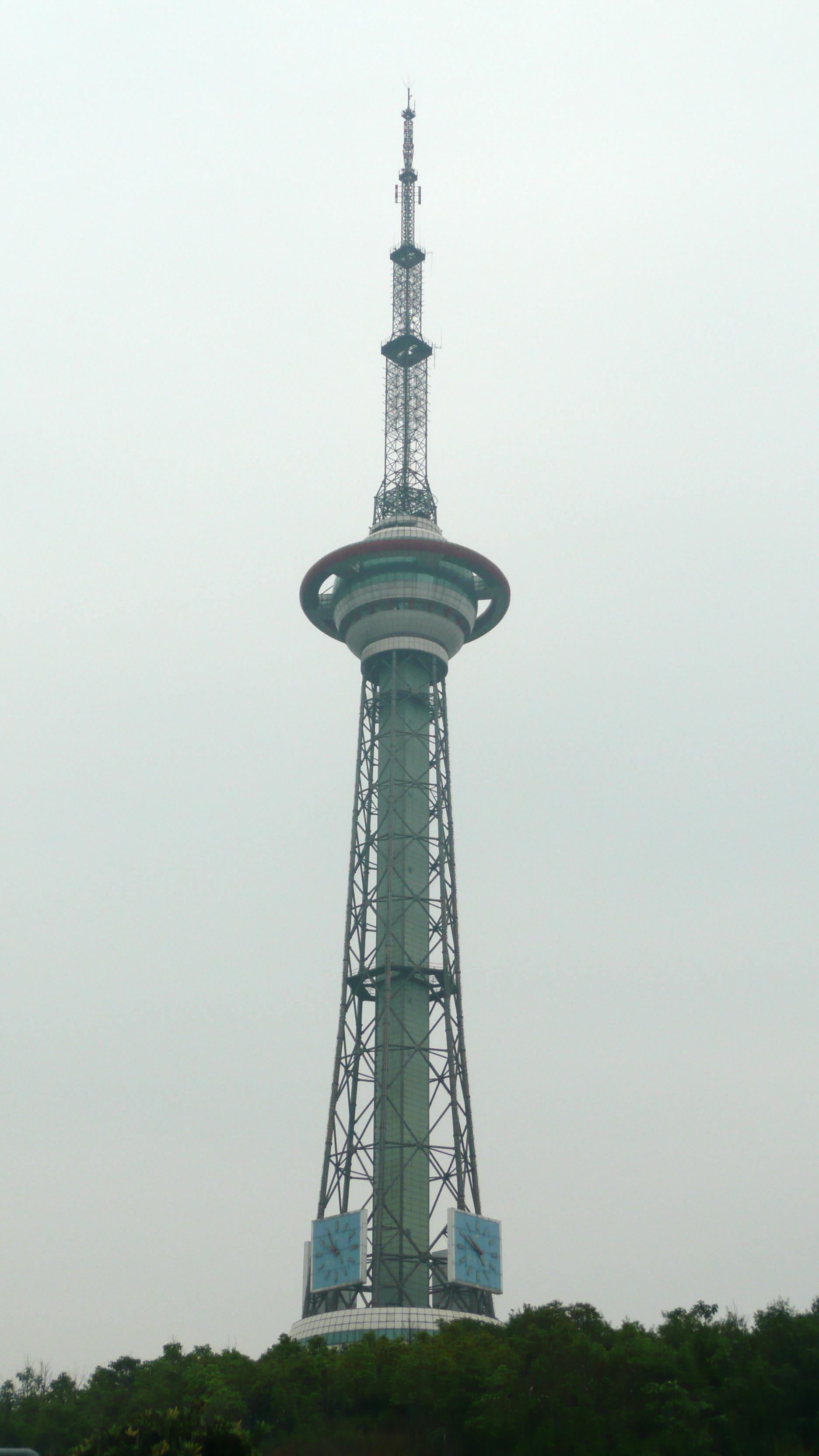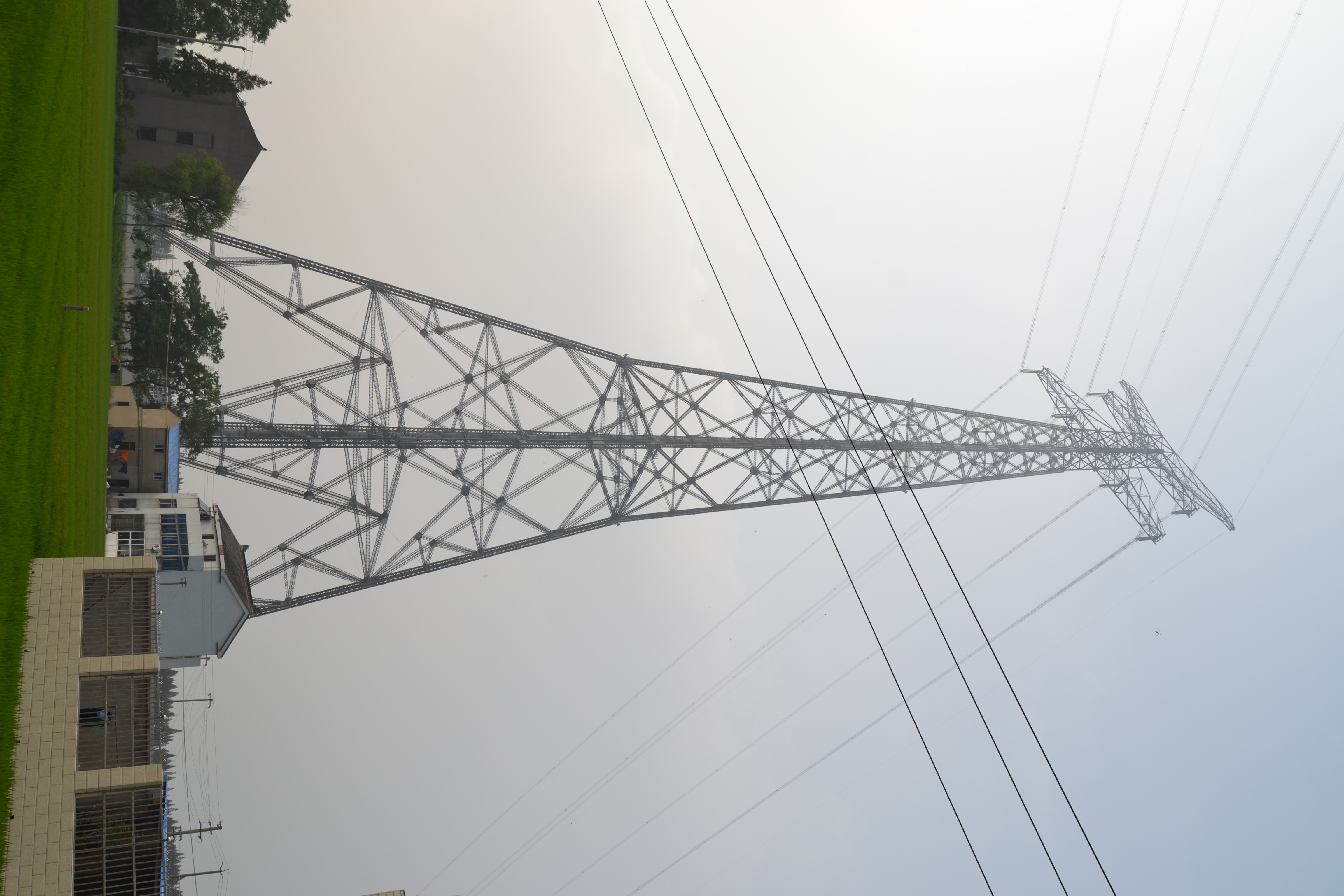Lattice Tower on:
[Wikipedia]
[Google]
[Amazon]
 A lattice tower or truss tower is a freestanding vertical framework
A lattice tower or truss tower is a freestanding vertical framework 


indicates a structure that has had a change in height or has been rebuilt.






indicates a structure that is no longer standing.
indicates a structure that is no longer standing.
 A lattice tower or truss tower is a freestanding vertical framework
A lattice tower or truss tower is a freestanding vertical framework tower
A tower is a tall Nonbuilding structure, structure, taller than it is wide, often by a significant factor. Towers are distinguished from guyed mast, masts by their lack of guy-wires and are therefore, along with tall buildings, self-supporting ...
. This construction is widely used in transmission tower
A transmission tower (also electricity pylon, hydro tower, or pylon) is a tall structure, usually a lattice tower made of steel that is used to support an overhead power line. In electrical grids, transmission towers carry high-voltage transmis ...
s carrying high-voltage electric power line
An overhead power line is a structure used in electric power transmission and Electric power distribution, distribution to transmit electrical energy along large distances. It consists of one or more electrical conductor, conductors (commonly mu ...
s, in radio masts and towers
Radio masts and towers are typically tall structures designed to support antenna (radio), antennas for telecommunications and broadcasting, including television. There are two main types: guyed and self-supporting structures. They are among the ...
(a self-radiating tower or as a support for aerials) and in observation tower
An observation tower is a tower used to view events from a long distance and to create a full 360 degree range of vision to conduct long distance observations. Observation towers are usually at least tall and are made from stone, iron, and woo ...
s. Its advantage is good shear strength
In engineering, shear strength is the strength of a material or component against the type of yield or structural failure when the material or component fails in shear. A shear load is a force that tends to produce a sliding failure on a mater ...
at a much lower weight than a tower of solid construction would have as well as lower wind resistance.
In structural engineering
Structural engineering is a sub-discipline of civil engineering in which structural engineers are trained to design the 'bones and joints' that create the form and shape of human-made Structure#Load-bearing, structures. Structural engineers also ...
, the term ''lattice tower'' is used for a freestanding structure, while a ''lattice mast'' is a guyed mast
A guyed mast is a tall thin vertical structure that depends on guy lines (diagonal tensioned cables attached to the ground or a base) for stability. The mast itself has the compressive strength to support its own weight, but does not have the ...
supported by guy lines. Lattices of triangular (three-sided) cross-section are most common, particularly in North America. Square (four-sided) lattices are also widely used and are most common in Eurasia. A lattice towers is often designed as either a space frame
In architecture and structural engineering, a space frame or space structure (Three-dimensional space, 3D truss) is a rigid, lightweight, truss-like structure constructed from interlocking struts in a geometry, geometric pattern. Space frames can ...
or a hyperboloid structure.
Before 1940, they were used as radio transmission towers especially for short and medium wave. Occasionally lattice towers consisting of wood were utilized. The tallest wooden lattice tower was at Mühlacker
Mühlacker is a town in the eastern part of the Enz (district), Enz district of Baden-Württemberg, Germany. Mühlacker station has direct rail connections with Stuttgart, Karlsruhe, Heidelberg, Pforzheim and the Northern Black Forest.
Mühlhau ...
, Germany. It had a height of and was built in 1934 and demolished in 1945. Most wood lattice towers were demolished before 1960. In Germany, the last big radio towers consisting of wood were the transmission towers of the Golm transmitter and the transmitter Ismaning. They were demolished in 1979 and 1983 respectively.
The tallest free-standing lattice tower is the Tokyo Skytree
, also written as Tokyo Sky Tree, is a broadcasting and observation tower, located in Sumida, Tokyo, Japan. It has been the tallest tower in Japan since opening in 2012,
, with a height of . The Petronius Compliant Tower is the tallest supported lattice tower at , being partially submerged. The city most renowned for lattice towers is Cincinnati
Cincinnati ( ; colloquially nicknamed Cincy) is a city in Hamilton County, Ohio, United States, and its county seat. Settled in 1788, the city is located on the northern side of the confluence of the Licking River (Kentucky), Licking and Ohio Ri ...
, Ohio, which features four towers above in height. Tokyo is the only other city in the world that has more than one above that height.
The majority of the tallest steel lattice towers in the world are actually built in water and used as oil platforms. These structures are usually built in large pieces on land, most commonly in Texas or Louisiana, and then moved by barge to their final resting place. Since a large portion of these towers is underwater, the official height of such structures is often held in dispute. The steel lattice truss for these structures, known as jackets in the oil industry, are typically far more robust and reinforced than their land-based counterparts, sometimes weighing more than 50,000 tons as is the case for the Bullwinkle and Baldpate platforms, whereas tall (above 300 m) land-based lattice towers range from a high of 10,000 tons as is the case in the Eiffel Tower
The Eiffel Tower ( ; ) is a wrought-iron lattice tower on the Champ de Mars in Paris, France. It is named after the engineer Gustave Eiffel, whose company designed and built the tower from 1887 to 1889.
Locally nicknamed "''La dame de fe ...
to as low as a few hundred tons. They are built to a higher standard to support the weight of the oil platforms built on top of them and because of the forces to which they are subjected. As a result, the cost to build these structures can run into the hundreds of millions. These costs are justified due to the resulting oil and gas revenues, whereas land-based towers have a much lower stream of revenue and therefore the capital costs of towers are typically much less.


Timeline of world's tallest lattice tower
Since end of the 19th century, tall lattice towers were built. Lattice towers have even held the absolute height record. They are among the tallest free-standing architectural structures and hold a number of national records, such as the tallest free-standing or even overall tallest structure of a country.Land record, iron and steel towers
Land record, wood towers
Land and water record, overall
Steel lattice towers
Tallest lattice towers, all types
List of all supertall lattice tower structures in the world.Lattice towers with observation decks
indicates a structure that is no longer standing.Radio tower carrying aerials
List of radio tower above 150 m / 500 ft in height. indicates a structure that is no longer standing.indicates a structure that has had a change in height or has been rebuilt.



Electrical Pylons
List of Electrical pylons above 150 m / 500 ft in height.
Wind turbines
Tall wind turbines supported by lattice tallest have been built almost exclusively in Germany, one of the first countries in the world to build wide spread renewable power resources. The total height includes the lattice tower and the wind turbine rotor at peak height. List of wind turbines with a lattice tower above 150 m / 500 ft in height.Chimneys/Smokestacks
The majority of tall lattice chimneys in the world are located in Japan. Unlike other modern developed countries which use reinforced concrete to build tall chimneys Japan has historically used steel until recently for chimney construction. List of lattice stacks above 150 m/492 ft in height.indicates a structure that is no longer standing.
Oil Platforms
List of oil platforms with a steel jacket above 300 m / 1000 ft in height.Jackup Rigs
List of jackup rigs above in height.Pillars of aerial tramways
Rides
List of amusement park rides that make use of a steel lattice tower above 100 m / 328 ft in height.Monuments
Lighthouses
Other uses
Wooden lattice towers
Existing towers
Destroyed Wooden lattice towers
Tallest lattice towers, by design type
List of the tallest lattice towers by ''common''(min 5) design types. Unique lattice tower designs. Minimum height of 120 m / 400 ft.indicates a structure that is no longer standing.
Hyperboloid structures
Landmark towers
Blaw-Knox towers
Top guyed lattice towers
See also
*List of towers
The tallest structure in the world is the Burj Khalifa skyscraper at . Listed are guyed masts (such as telecommunication masts), self-supporting towers (such as the CN Tower), skyscrapers (such as the Willis Tower), oil platforms, electricity ...
* List of tallest towers
The tallest structure in the world is the Burj Khalifa skyscraper at . Listed are guyed masts (such as telecommunication masts), self-supporting towers (such as the CN Tower), skyscrapers (such as the Willis Tower), oil platforms, electricity ...
* List of tallest structures
* List of tallest freestanding steel structures
* List of tallest buildings and structures
This is the History of the world's tallest structures.
Overall
Below is a list of the tallest structures supported by land. For most of the period from around 2650 BC to 1240 AD, the Egyptian pyramids (culminating in the Great Pyramid of Giz ...
* List of tallest oil platforms
This is a list of the tallest oil platforms over in height. It includes compliant towers, condeep gravity-based structures, and fixed platforms, but not other Oil platform#Types, types of oil platform, which can be much taller (see Oil platform#De ...
* Additionally guyed tower
* Architectural structure
A structure is an arrangement and organization of interrelated elements in a material object or system, or the object or system so organized. Material structures include man-made objects such as buildings and machines and natural objects such as ...
* Hyperboloid structure
* Partially guyed tower
References
{{Authority control Lattice towers